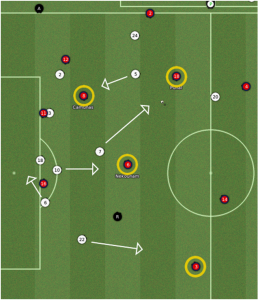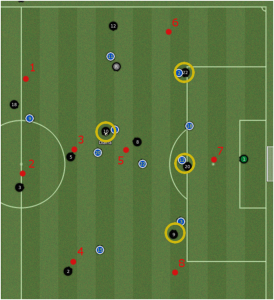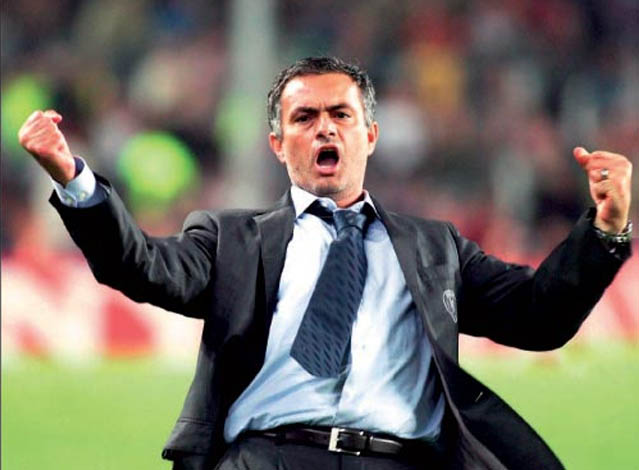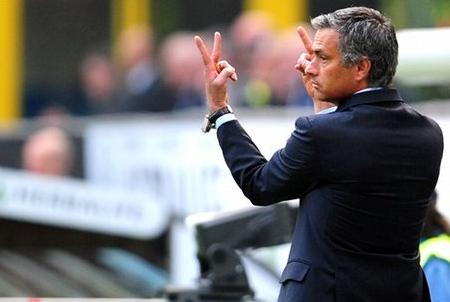-
Recent Articles
The Midfielder as Centerback
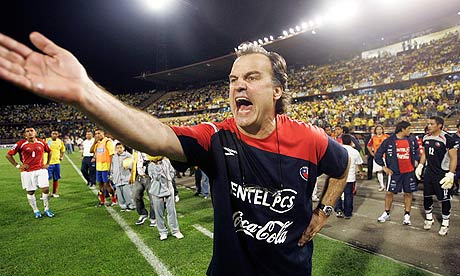 Marcelo Biesla and Josep Guardiola are both managers who play a very high line with their respective sides and who both demand that all players be technically proficient with the ball. Part of playing...
Marcelo Biesla and Josep Guardiola are both managers who play a very high line with their respective sides and who both demand that all players be technically proficient with the ball. Part of playing...Understanding the 4-4-2 Diamond
DEFENCE Despite the fact that there are four ways to play a diamond formation on FM, the differences between them are few and usually subtle. As a starting point, one thing each of them do have...3 at the back and the 4-4-2 Diamond
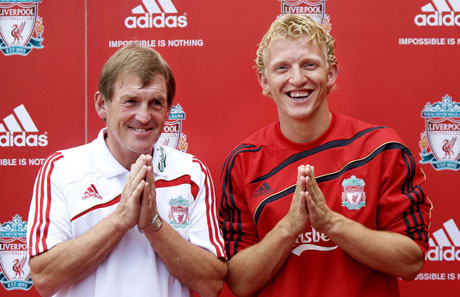 Last week Chelsea v Liverpool became the biggest tactical talking point of the season. Liverpool revived the the 3 man defence that Kenny debuted against Stoke. While with the introduction of Torres for £50m...
Last week Chelsea v Liverpool became the biggest tactical talking point of the season. Liverpool revived the the 3 man defence that Kenny debuted against Stoke. While with the introduction of Torres for £50m...How To Set Up A Back Four
 Last year, I wrote a guide about how to play a simple 4-4-2. One of the major components of that is the back four. In fact, most modern formations build upon four defenders; two full backs and two centre...
Last year, I wrote a guide about how to play a simple 4-4-2. One of the major components of that is the back four. In fact, most modern formations build upon four defenders; two full backs and two centre...Building Your Defence: Full Backs
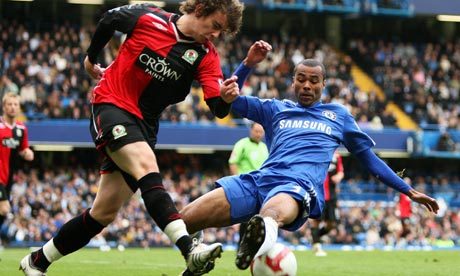 The modern full back is quickly becoming one of the most important players on the team sheet, infact even back in the days of Brian Clough, fat ed' argued that because of the space these players get in the final...
The modern full back is quickly becoming one of the most important players on the team sheet, infact even back in the days of Brian Clough, fat ed' argued that because of the space these players get in the final...
JOIN 12,748 READERS - SUBSCRIBE NOW TO OUR FOOTBALL MANAGER NEWSLETTER
Get the latest FM news & best community content delivered directly to your e-mail inbox!
How Will Jose Mourinho Manage at Real Madrid? (Part 6)
Written by: Gareth Millward
Category: Editorials
Posted on: August 2, 2010
August 2, 2010
I mentioned in the last article that we had some issues with smaller sides; the ones content to sit back and make us break them down. Counter-attacking doesn’t work if the opposition never attack, and so earlier I had created a new system to try and beat the opposition by putting ourselves on the front foot.
It didn’t work so well. Although we didn’t lose again, we did draw a good number of matches. We also conceded some sloppy goals. What follows is a quick rundown of our two main issues. First, we were unable to boss the midfield, allowing our opponents to create much better passing moves and stretching our defence. Second, our attack looked toothless, unable to break down the opposition and unable to create the killer balls needed to score the goals that win football matches.
The midfield problem
Check out this situation which led to Osasuna’s goal against us in our 2-1 win at their place. This was typical of what I was seeing, although it wasn’t until the Kazan game (see the previous article) that I properly realised and was able to try to fix it.
The four gold circles show four players who are completely unmarked. You’ll also notice that their left winger (Osasuna #16) is also not marked properly. He ends up scoring. The two MCs (Osasuna #18 and #6) pass to each other; they then thread in the AMC (Osasuna #8) who picks out the winger unmarked in the channel (Osasuna #16). In the one-on-one, they score. Thankfully, this was in the 88th minute when we were 2-0 up – but it isn’t the Mourinho way to let a team score like that!
Giving them possession is fine providing they cannot do anything with it. In this situation, clearly they could. So, what do we do to fix it? The white arrows show where my players should have moved to. My right back (Belletti, #6) clearly wasn’t goal side of their winger (Osasuna #16) – he should have been, given the instructions to tight mark and close him down. My right winger (Afellay, #22) should have been pushed up on their left back (Osasuna #3), or perhaps dropping deeper to help out marking the Osasuna number 16. My midfield, a different shape to the opposition just couldn’t cope. My AMC (Raúl, #7) should have been watching one of their MCs (Osasuna #18). One of my MCs (in this case Diarra, #10) should have been pushed out on their other MC (Osasuna #6). While the spare MC (Xabi Alonso, #5) should have been watching their AMC (Osasuna #8).
It’s quite clear then that while we don’t necessarily need to wrest the ball back all the time, we do at least need to cut off the outlet passes. Their AMC was able to work in the hole between my defence and midfield which is a disaster waiting to happen. Moreover, while we can allow their two MCs to pass between each other, providing they are not given the time, space and option to play a dangerous pass. All of these factors caused this goal to be scored – though thankfully we won the match.
The goal scoring problem
In attack, the options are simply not there. Against Espanyol we managed to get in 20 shots, only two of which were long range. And yet we created no clear cut chances and ended up with a 0-0 draw.
One of the reasons for this was our toothless attack. Take a look here at a typical scenario. Our holding player, Lassana Diarra, has the ball in the centre of the picture. He is under pressure, and so needs to play the ball quickly or do something special. The red dots show possible passing options, while the gold circles show our offensive players being tightly marked out of the game.
Option 3 is difficult because their #20 can quickly close down our #5 (Xabi Alonso), possibly even making an interception. It would require our player to make a quick decision, which would inevitably lead to a less incisive pass. Option 5 carries similar issues, with our #8 (Kaká) under pressure in that midfield triangle. It also needs Kaká to receive the ball and play it with his back to goal, making any pass more defensive.
Option 4 not only has to clear the Espanyol #20, but would most likely be lofted forcing our #2 (Arbeloa) into an aerial challenge with their #15. This is unlikely to lead to a quick pass forward, and Arbeloa isn’t exactly a beast in the air. The ball could go wide to Option 6, but that would require either Afellay (#22) to out run his marker (who has a yard on him already), or for Marcelo (#12) to burst into the hole. Either might be fine – except Diarra somehow has to turn on the spot and dig the ball out to that wing very quickly and accurately. Almost impossible given the pressure he is under from their #8. So, the other wide option is number 8. This is more likely, given the position of Diarra, but it needs to played wider than Ronaldo (#8) to avoid an aerial challenge with their #3. Ronaldo is OK in the air, but his only option would be to flick the ball to somewhere near the option 7 spot and hope Higuaín could beat the keeper to it. Not ideal, and very likely to lead to us losing possession. The issue with option 8, though, is that Ronaldo will receive the ball with his back to the goal; he will be forced to do something special to either push towards the corner flag or use his full back as an outlet. Neither is ideal, since the centre of the field is flooded to avoid the cross, and the full back (Arbeloa) is nicely marked by their #15.
The final attacking choice is option 7. This is not the best strategy. Higuaín (#20) is not that strong aerially, and any lofted ball would most likely be taken by the keeper or nodded to safety by their centre back. It could not be played along the ground because it would be intercepted, so there is no chance of laying a sweet ball for the Argentine to run on to. So that leaves the safety-first passes. Either option 1 to the centre back (which requires Diarra to spin on the spot, pick a perfect pass and play it out of reach of their striker, #9), or option 2 which remains the only pass which can be played along the ground to an unmarked man without fear of it being intercepted & allowing the player to face the goal as he receives it.
With every option, it becomes inconceivable that the team could quickly make some combinations to create an opening. Nearly every player has to control the ball, move somewhere and then look for an option. Our tactics, then, need to provide better passing options under pressure, create better movement from the forward line and allow the team to utilise its immense technical strengths and speed.
Towards a solution
Any potential solution to these two problems requires a system which can both pressure their midfield and also give us more outlets in attack. That means pushing people up in two senses – first, pushing the midfield up to heap more pressure on their midfielders; second pushing more people forward to give passing options in attack. In the next article, I will show what my initial solution was to this conundrum and we can see whether or not it actually worked. Here’s hoping; I don’t want Mourinho to go the same way as Pellegrini…
About The Author: Gareth Millward
Member of the FM-B Think Tank and one of the main authors and editors of FM-B’s tactical guides and e-books, Millie organises the content for the main site. He has a particular interest in the history of football tactics (probably because in real life he is an historian) and in recreating real-world football in the FM match engine.
Download Our Tactical Theorems '10 eBook Absolutely Free

Presenting the most comprehensive tactic design and match strategy guide to the Football Manager series ever created!
Written by FM match engine beta testers, it's 60+ pages of easy-to-read concepts and ideologies for getting your team playing exactly how you want each match! It's been downloaded over 100,000+ times to date!
Find out more information about our tactical eBook
and download Tactical Theorems '10 right now!
Written by FM match engine beta testers, it's 60+ pages of easy-to-read concepts and ideologies for getting your team playing exactly how you want each match! It's been downloaded over 100,000+ times to date!
and download Tactical Theorems '10 right now!

